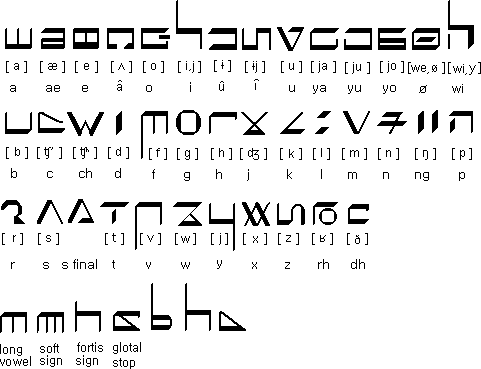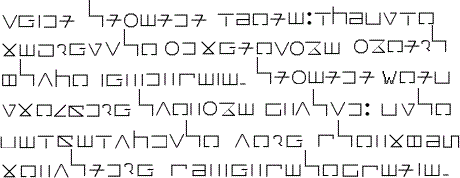Naljeogigeul

The Naljeogigeul alphabet was invented by Bae Jun and was derived
from his syllabic script, also called Naljeogigeul,
which he developed as an alternative script for Korean. The Naljeogigeul
alphabet is designed to make it easier to write other languages, especially
languages with many consonant clusters.
Most characters in the alphabetic version of Naljeogigeul are borrowed,
modified, or newly constructed, from the syllabic version of Naljeogigeul.
When used with the syllabic version, the alphabetic version is usually
used for annotation or to indicate pronunciation of unknown word, because
it occupies a relatively small amount of space.
Notable features
- Direction of writing: left to right in horizontal lines
- Used to write: Korean, and other languages
- Naljeogigeul means “diary script” in Korean. Bae Jun has used this
script to write his diary since 1997.
Naljeogigeul script

Sample text in the Naljeogigeul alphabet

Transliteration
Modeun Ingan-eun Tae-eonal ttaebuteo Jayuroumyeo Geu Jon-eomgwa Gwonrie
Iss-eo Dongdeunghada. Ingan-eun Cheonbujeog-euro Iseong-gwa Yangsim-eul
Bu-yeobad-ass-eumyeo Seoro Hyungje-ae-ui Jeongsin-euro Haengdongha-yeo-yahanda.
Transliteration
All human beings are born free and equal in dignity and rights. They
are endowed with reason and conscience and should act towards one another
in a spirit of brotherhood.
(Article 1 of the Universal Declaration of Human Rights)
